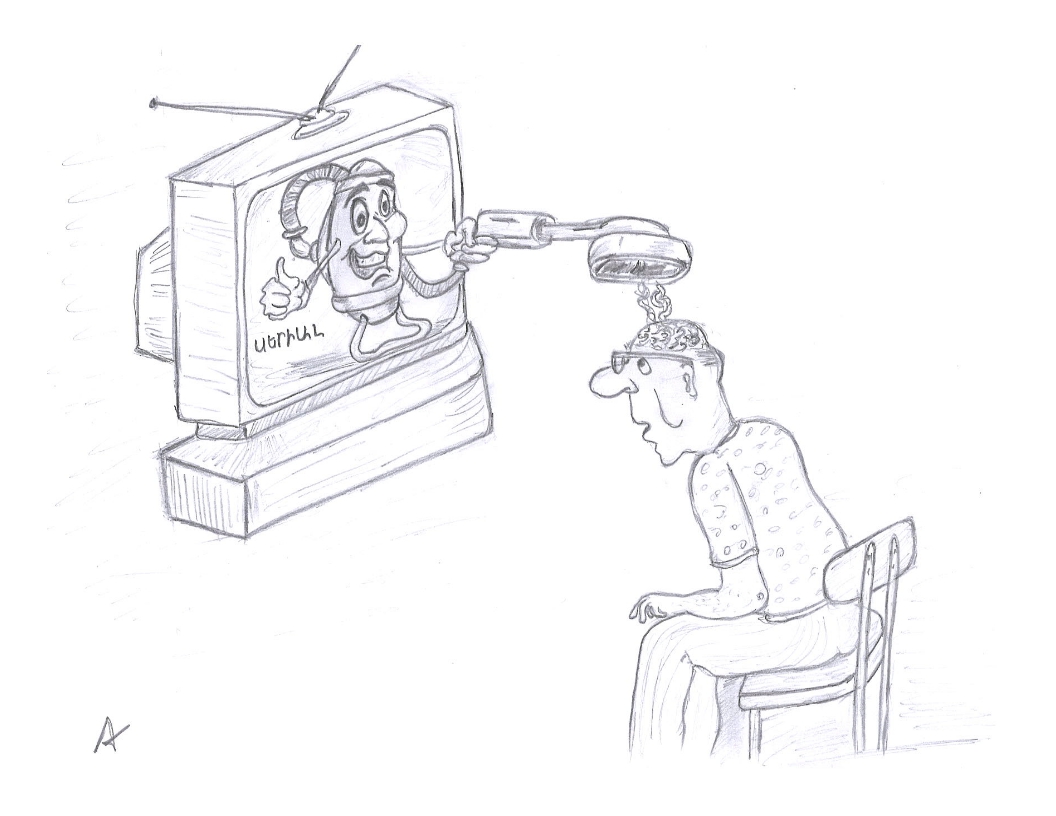
As a rule, local TV news programs are not taken seriously by our fellow citizens. However, if we take into account that in many people’s homes the television is on all day (in the background), then the news reported from the screen, nevertheless, finds its intended audience (as a subconscious layer in the background).
And it’s very interesting to track how the resonance of propaganda sheds a positive light on any TV news report or event and slowly seeps into people’s brains as a virtual and dreamlike reality. It is the positive, in its widest spectrum, that is important in local TV news programming, and this artificial positivity, nevertheless, works quite well. It “kills” the news and at the same time endows it with illusion.
There was a time when TV viewers expected the tube to answer the question not “what will they show?” but “how will they show it?”. The Soviet-era TV viewer knew that he had to try to read not the news, but the footnote to that news. It was hard to trick the TV viewer well-versed in sub-context “wars” — he was sure that when happy, joyous information increased something in the country was seriously wrong.
TV audiences in Armenia today are completely different: they are no longer interested in “what” (there are more mobile and unedited sources for finding the actual “what” and television is definitely not in first place among these), nor in “how”. News providers have become conjectural and one-sided. And if we consider that the day’s news with nearly the same remarks and same images moves from one channel to the next, then the one-sidedness has began to be widespread in nature. It’s a paradox, but the attraction of Armenian television lies in this.
The friendly-pleasant-joyful model is selected as the dominant and stimulating news format. There’s the impression that TV news reports are created with templates that are accepted once and for all (still from the Soviet years). The first, second or penultimate and unknown personalities met, discussed, participated, watched a performance, visited the regions, planted a tree, they wagged a righteous and stern finger at this or that person… and they did all this for the benefit and welfare of the homeland.
[[wysiwyg_imageupload:124:]]
Even in those cases when unpleasant accidents or catastrophes are reported, the TV suggests we take pride as a nation in the quick resolution of such incidents or at the very least by the fact of their warning. The news doesn’t offer more than that. Such a lively, infantile format (seasoned with song and dance) creates a new type of TV audience, and it’s worth psychologists pondering the portrait that is drawn.
The news staged and provided as “good-neighborly” drama acclimatizes and reconciles many with reality. Recently, for example, speaking with the residents of a remote village, who basically watch the Public Television channel, I became convinced that the TV for them is a fairy tale–like platform, where they see “pretty-pretty and happy-happy” things. What’s noteworthy is that they see fairy tales in (supposedly) documentary reportages, and (supposedly) real life in soap operas.
Such an understanding of life and fiction could’ve been considered funny if it wasn’t worrying in reality.
The entire negativity on television is directed through a special pipeline at soap operas, while news gets rid of problematic questions and begins to shine as “pure” performance. It is news itself that is perceived as illusory reality, especially that it always has a “happy ending” or at least the impending arrival of such is visible (let’s say, there is a need for intervention by a superior body just as in old Greek tragedies God who came down from the the sky established peace). And soap operas, which are based on a game of acting and on something that never existed acquire the strength of fact.
News and soap operas, like inseparable “sisters,” have exchanged places when it comes to their purpose. This is a modern-day television strategy.
Nune Hakhverdyan
The views expressed in the column are those of the author's and do not necessarily reflect the views of Media.am.


Add new comment
Comments by Media.am readers become public after moderation. We urge our readers not to leave anonymous comments. It’s always nice to know with whom one is speaking.
We do not publish comments that contain profanities, non-normative lexicon, personal attacks or threats. We do not publish comments that spread hate.